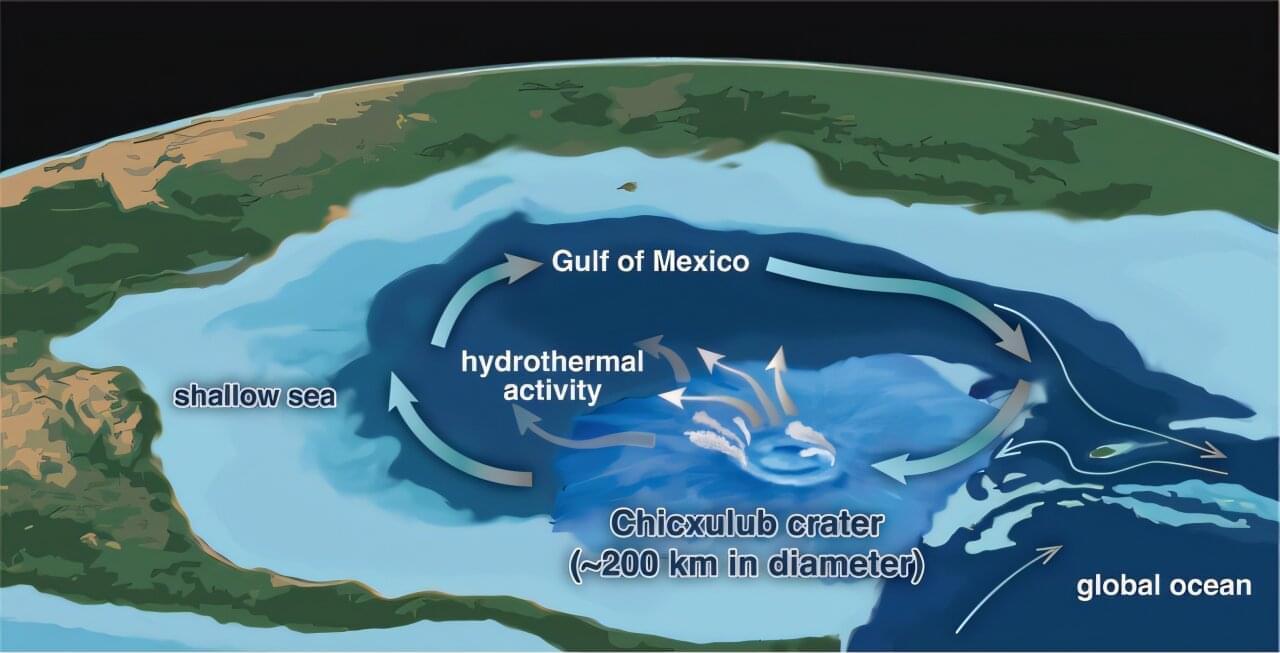“Second Variety” is a science fiction novelette by American writer Philip K. Dick, first published in Space Science Fiction magazine, in May 1953. Set in a world where war between the Soviet Union and United Nations has reduced most of the world to a barren wasteland, the story concerns the discovery, by the few remaining soldiers left, that self-replicating robots originally built to assassinate Soviet agents have gained sentience and are now plotting against both sides. It is one of many stories by Dick to examine the implications of nuclear war, particularly after it has destroyed much or all of the planet. The story was adapted into the movie Screamers in 1995. 00:00 Intro 01:03 Peek into the plot 03:33 Self-Replication and Technological Autonomy 06:51 Current Autonomous Warfare Capabilities 10:30 Space Warfare and the Projection of Terrestrial Conflict 13:14 Current State of Space Warfare 15:22 Wrapping Up =============== 🎬 Loitering munitions system WARMATE • Loitering munitions system WARMATE 📙 🇺🇸 Superintelligence: Paths, Dangers, Strategies https://bookshop.org/a/98861/97801987… The Human Terrain Project — PENTAGON’S attempt to understand The Enemy | ENDEVR Documentary
• The Human Terrain Project — PENTAGON’… 📙 🇺🇸 War in the Age of Intelligent Machines https://monoskop.org/images/c/c0/DeLa… =============== Buy the book featured in this video: 📙 🇺🇸 Buy the book Second Variety https://bookshop.org/a/98861/97988883… 🎧 Free Audiobook
• Post-Apocalyptic Story “Second Variet… =============== You can find my take on things summarised in the books I wrote. 📙🇺🇸Chronicles of the Machine — Simulated conversations with Philip K. Dick https://buchshop.bod.ch/chronicles-of… 📙🇺🇸Zero Person: Reframing Autistic Cognition Beyond the Self https://buchshop.bod.ch/zero-person-e… 📙🇩🇪Zero Person: Autistische Kognition jenseits des Selbst https://buchshop.bod.ch/zero-person-e… 📙🇺🇸Book order: The end of the I https://www.bod.ch/buchshop/the-end-o… 📙🇩🇪Book order: Das Ende des Ichs https://www.bod.ch/buchshop/das-ende–… 📙🇺🇸 #actuallyautistic — Living with Autism – A Poetic Exploration of the Spectrum https://buchshop.bod.ch/actuallyautis… =============== Image credits: Freepik.
Category: existential risks – Page 8
JWST Advanced Deep Survey Suggests Our Universe is Trapped inside a Supermassive Black Hole
Join to get access to perks:
https://www.youtube.com/channel/UCmgh6UWmZuJmHZZIGwISCug/join.
Astronomers analyzing Webb’s data have found that early galaxies seem to favor a particular spin direction—an observation that defies the Cosmological Principle. If confirmed, this could suggest that the universe was born with a fundamental rotation, pointing toward radical theories like black hole cosmology.
But this is just the beginning. The telescope has also spotted galaxies forming far earlier than they should have, some potentially dating back to just 168 million years after the Big Bang. These findings contradict existing models of cosmic evolution, raising the possibility that our understanding of time, expansion, and even reality itself may be flawed.
Adding to the mystery, supermassive black holes have been detected in the early universe, defying expectations of how they should form. Could they be remnants of a previous cosmic cycle? Some researchers are now revisiting the Cyclical Universe Theory, which suggests our universe may be part of an infinite loop of creation and destruction.
With every new revelation, JWST is not just answering questions—it’s creating new ones. Are we on the verge of a fundamental shift in physics, or is there a simpler explanation we have yet to uncover?
The James Webb Space Telescope has uncovered some of the most perplexing discoveries in modern astronomy, challenging everything we thought we knew about the cosmos. From galaxies that appear too massive and too developed for their age to a potential imbalance in galactic rotation, these findings are shaking the foundations of the Big Bang model. Could our universe itself have been born inside a black hole?
THE SIMULATION HYPOTHESIS & VIRTUAL WORLDS — David Chalmers PHD #16
How likely is it that we live in a simulation? Are virtual worlds real?
In this first episode of the 2nd Series we delve into the fascinating topic of virtual reality simulations and the extraordinary possibility that our universe is itself a simulation. For thousands of years some mystical traditions have maintained that the physical world and our separated ‘selves’ are an illusion, and now, only with the development of our own computer simulations and virtual worlds have scientists and philosophers begun to assess the statistical probabilities that our shared reality could in fact be some kind of representation rather than a physical place.
As we become more open to these possibilities, other difficult questions start to come into focus. How can we create a common language to talk about matter and energy, that bridges the simulated and simulating worlds. Who could have created such a simulation? Could it be an artificial intelligence rather than a biological or conscious being? Do we have ethical obligations to the virtual beings we interact with in our virtual worlds and to what extent are those beings and worlds ‘real’? The list is long and mind bending.
Fortunately, to untangle our thoughts on this, we have one of the best known philosophers of all things mind bending in the world, Dr. David Chalmers; who has just released a book ‘Reality+: virtual worlds and the problems of philosophy’ about this very topic. Dr. Chalmers is an Australian philosopher and cognitive scientist specialising in the areas of philosophy of mind and philosophy of language. He is a Professor of Philosophy and Neuroscience at New York University, as well as co-director of NYU’s Center for Mind, Brain and Consciousness. He’s the founder of the ‘Towards a Science of Consciousness Conference’ at which he coined the term in 1994 The Hard Problem of Consciousness, kicking off a renaissance in consciousness studies, which has been increasing in popularity and research output ever since.
Donate here: https://www.chasingconsciousness.net/episodes.
What we discuss in this episode:
00:00 Short Intro.
06:00 Synesthesia.
08:27 The science of knowing the nature of reality.
11:02 The Simulation Hypothesis explained.
15:25 The statistical probability evaluation.
18:00 Knowing for sure is beyond the reaches of science.
19:00 You’d only have to render the part you’re interacting with.
20:00 Clues from physics.
22:00 John Wheeler — ‘It from bit’
23:32 Eugene Wigner: measurement as a conscious observation.
27:00 Information theory as a useful but risky hold-all language tool.
34:30 Virtual realities are real and virtual interactions are meaningful.
37:00 Ethical approaches to Non-player Characters (NPC’s) and their rights.
38:45 Will advanced AI be conscious?
42:45 Is god a hacker in the universe up? Simulation Theology.
44:30 Simulation theory meets the argument for the existence of God from design.
51:00 The Hard problem of consciousness applies to AI too.
55:00 Testing AI’s consciousness with the Turing test.
59:30 Ethical value applied to immoral actions in virtual worlds.
References:
US Nuclear War Simulation in REALTIME!!!
In around a period of 30 minutes the United States can launch over 1,000 nuclear weapons against its enemies. This video is a realtime simulation of such an action.
Sources:
Probable Nuclear Targets in United Kingdom, 1972: https://robedwards.typepad.com/files/probable-nuclear-target…chives.pdf.
Probable Nuclear Targets in France: https://upload.wikimedia.org/wikipedia/commons/thumb/f/f0/NA…en.svg.png.
Soviet Union Central European Target List, 1979: https://brilliantmaps.com/ww3-europe/
United States Target List, 1956: https://nsarchive2.gwu.edu/nukevault/ebb538-Cold-War-Nuclear…plete.pdf.
The Fermi Paradox & Zombie AI — Are Rogue Machines Hiding in the Cosmos?
Are rogue machines lurking in the cosmos, quietly outlasting their creators? We explore the eerie possibility that ancient AI remnants, abandoned or self-replicating, could be hidden throughout the galaxy—watching, waiting, and perhaps even shaping the fate of civilizations.
Watch my exclusive video Post-Consciousness Civilizations: https://nebula.tv/videos/isaacarthur-postconsciousness-civil…-awareness.
Get Nebula using my link for 40% off an annual subscription: https://go.nebula.tv/isaacarthur.
Get a Lifetime Membership to Nebula for only $300: https://go.nebula.tv/lifetime?ref=isaacarthur.
Use the link gift.nebula.tv/isaacarthur to give a year of Nebula to a friend for just $30.
Visit our Website: http://www.isaacarthur.net.
Join Nebula: https://go.nebula.tv/isaacarthur.
Support us on Patreon: https://www.patreon.com/IsaacArthur.
Support us on Subscribestar: https://www.subscribestar.com/isaac-arthur.
Facebook Group: https://www.facebook.com/groups/1583992725237264/
Reddit: https://www.reddit.com/r/IsaacArthur/
Twitter: https://twitter.com/Isaac_A_Arthur on Twitter and RT our future content.
SFIA Discord Server: https://discord.gg/53GAShE
Credits:
The Fermi Paradox & Zombie AI: Are Rogue Machines Hiding in the Cosmos?
Episode 494; April 10, 2025
Written, Produced & Narrated by: Isaac Arthur.
Editors: Briana Brownell & Donagh Broderick.
Select imagery/video supplied by Getty Images.
Music Courtesy of Epidemic Sound http://epidemicsound.com/creator.
Phase Shift, “Forest Night“
Chris Zabriskie, “Unfoldment, Revealment”, “A New Day in a New Sector”, “Oxygen Garden“
Stellardrone, “Red Giant”, “Billions and Billions”

The Descendants of Darkness: Exploring the Hypothesis of Grey Aliens as Future Cave-Dwelling
Reports of extraterrestrial beings, particularly the iconic “grey aliens,” have permeated modern folklore and ufology since the mid-20th century. These beings — typically described as small-statured humanoids with large, black almond-shaped eyes, diminutive noses and mouths, and grey skin — have become embedded in our cultural consciousness (Sagan, 1995). But what if these entities are not visitors from distant stars, but rather glimpses of our own evolutionary future? This essay explores a compelling hypothesis: that the grey aliens reported in countless encounters might be evolved or bio-engineered humans from our future, adapted specifically for subterranean existence following a global catastrophe.
Humanity stands at a crossroads of existential risk. Climate change, nuclear proliferation, biological warfare capabilities, and ecological collapse represent just a few of the potential calamities that could force a dramatic reshaping of human civilization (Bostrom, 2013). If surface conditions on Earth became inhospitable — whether through nuclear winter, extreme solar radiation following ozone depletion, or uninhabitable surface temperatures — surviving populations might be driven underground, initiating a profound evolutionary divergence.
“When faced with extinction-level threats, species often undergo rapid adaptation to secure their survival,” notes evolutionary biologist Dr. Elena Rodriguez (2022, p. 87). “Humans, with their capacity for technological intervention in their own biology, could potentially accelerate this process by orders of magnitude.”
No, the dire wolf has not been brought back from extinction
Colossal Biosciences claims three pups born recently are dire wolves, but they are actually grey wolves with genetic edits intended to make them resemble the lost species

Life recovered rapidly at site of dino-killing asteroid. A hydrothermal system may have helped
About 66 million years ago, an asteroid slammed into the planet, wiping out all non-avian dinosaurs and about 70% of all marine species.
But the crater it left behind in the Gulf of Mexico was a literal hotbed for life, enriching the overlying ocean for at least 700,000 years, according to research published today in Nature Communications.
Scientists have discovered that a hydrothermal system created by the asteroid impact may have helped marine life flourish at the impact site by generating and circulating nutrients in the crater environment.

No Longer Extinct? Colossal Biosciences’ Dire Wolf Project
The return of the Dire wolves?
Colossal Biosciences’ project to revive the once-extinct dire wolf could also prevent existing but endangered animals from slipping into extinction themselves.
Get the day’s top headlines to your inbox, curated by TIME editors: https://ti.me/48dFNwQ
Follow us:
X (Twitter): https://ti.me/3xTVwSk.
Facebook: https://ti.me/3xWI2Fg.
Instagram: https://ti.me/3dO9Rcc